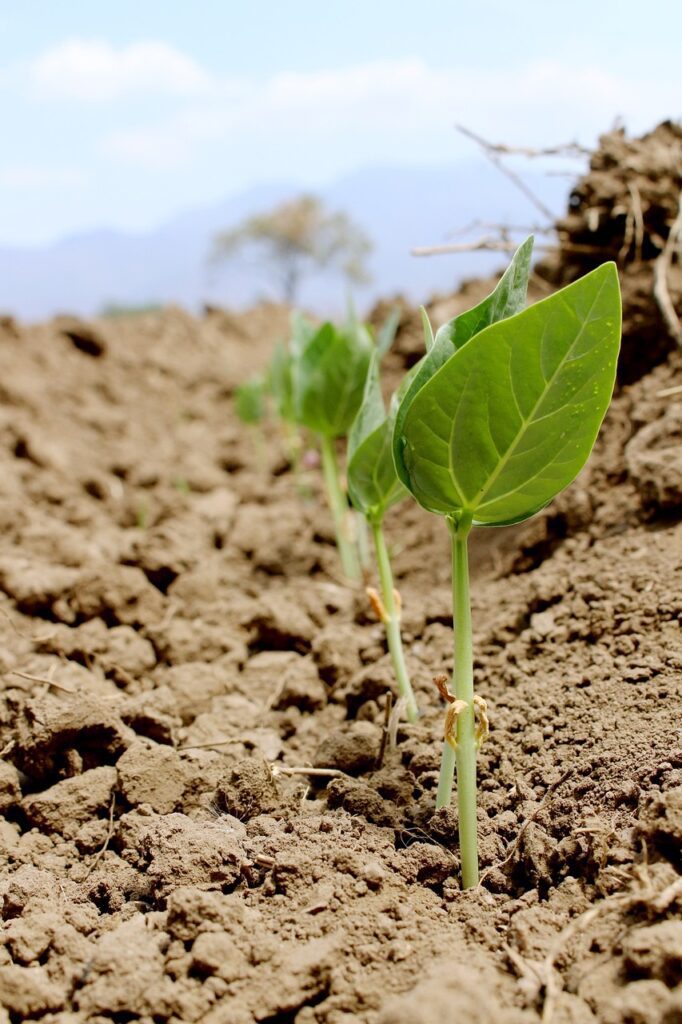Lesson: Structure of the flowering plants
The program of plant physiology in «terminal» is focused on understanding the organisation of the parts of a flowering plant (to include the roots, stem, leaves and vascular structures), describe their functions and understand the autotrophic nature of plants. Special care will be brought to define the different tissues and their location in roots and shoots as well as distinguishing the differences between monocotyledons and dicotyledons.
A- Root system
There are 4 main types of roots.
• Tap root (or primary root) consist of a main root that from the radicle (which is the initial root that emerged from the seed). Lateral or secondary roots emerge from the primary root. The tips of the lateral roots have thousands of tiny, invisible root hairs. Tap roots are present in most dicotyledons.
• Fibrous roots form when the radicle dies away to leave a group of equal-sized roots. These roots emerge from the base of the stem. They are most common in monocotyledons.
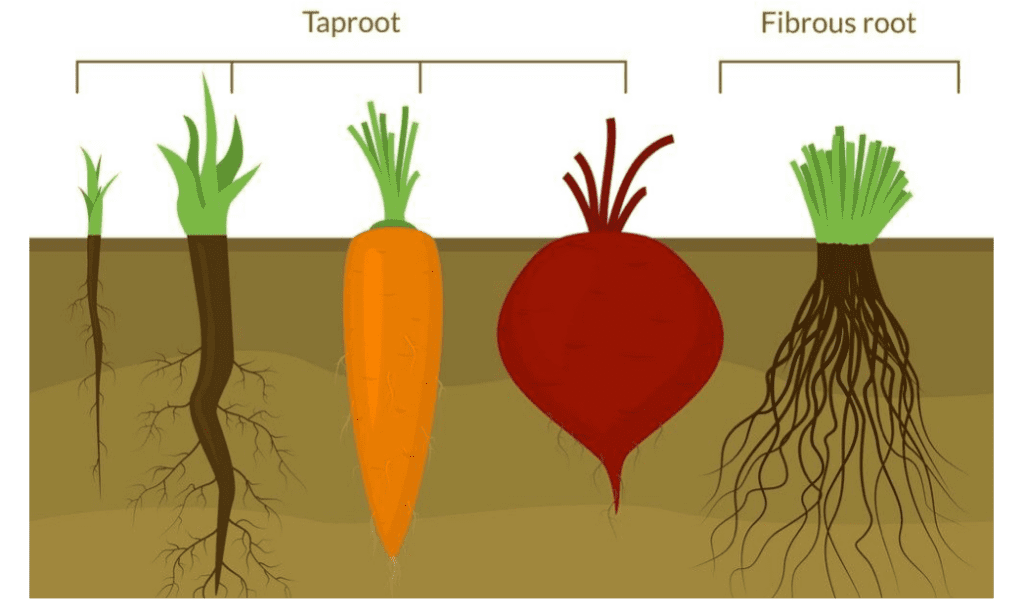
• Adventitious roots are roots that do not develop from the radicle but any other tissue.
• Secondary roots emerge from other roots.
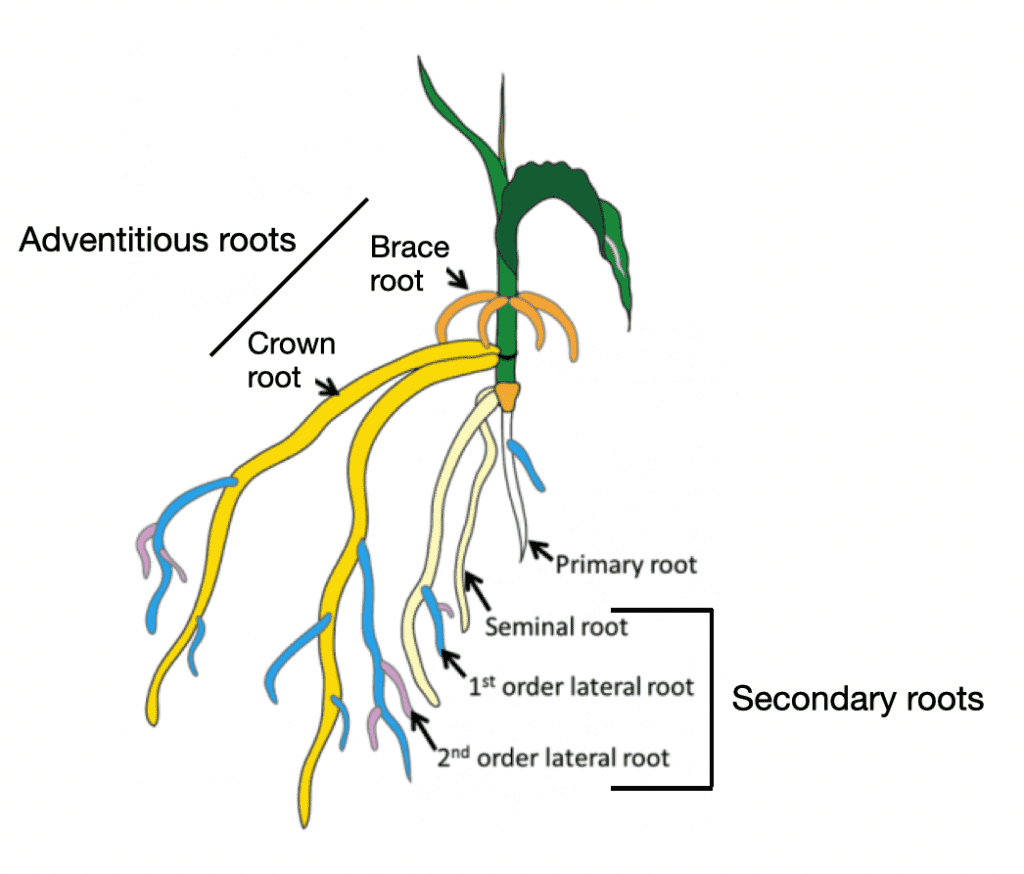
Roots function to anchor the plant in the soil; to absorb water and mineral salts from the soil – the root hairs carry out this function, to transport absorbed materials to the shoots; and to store nutrients in some plants.
The root tip can be divided in four zones, each with a distinct function.
1. Zone of protection : the root cap protects the root cells as they push through the soil.
2. Zone of cell production, or meristematic zone : meristems allow plants to grow. Cells in the root meristem are constantly dividing by mitosis to produce new cells for root growth.
3. Zone of elongation : when new cells are formed by the meristem they are very small. ln the zone of elongation, plant growth regulators (such as auxins) stimulate the cells to grow longer.
4. Zone of differentiation : in this region, the elongated cells, which are ail similar or undifferentiated, differentiate into different types of tissues.
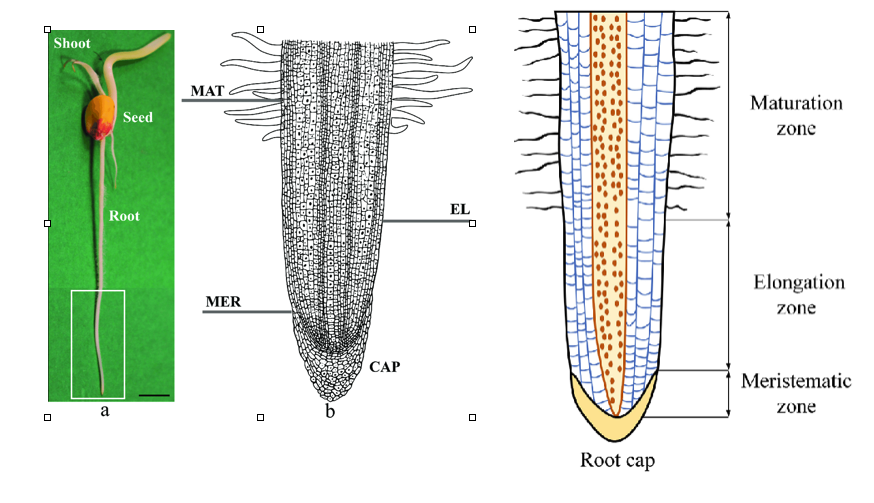
B- Shoot system
The shoot system is the part of the plant above ground level. It consists of the stem, leaves, flowers, seeds and fruits.
The stem is the main part of the shoot. In herbaceous plants it is usually soft and green and does not contain wood. In woody plants it’s hard, woody and brown.
The stem carries leaves, which emerge from points called nodes. The part of the stem between two nodes is called an internode. The tip of the stem has a terminal or apical bud (from the Latin apex, meaning ‘tip’). This causes the stem to grow at the growing tip. If the growth tip is removed, a low bushy plant will form. The axil is the angle between a leaf and a stem. Axillary or lateral buds are located at each axil. These buds produce new growth such as branches or flowers.
Stems function to support the aerial parts of the plant; to transport water and minerals from the roots to the shoot; transport nutrients made in the leaves to the roots; and in some instance carry out photosynthesis (when they are green) or even store nutrients.
Leaves are attached to stems at nodes. The stalk of the leaf is called the petiole.
The leaf is normally flattened into a thin leaf blade or lamina. The petiole continues through the lamina as the midrib. Veins emerge from the midrib and are clearly seen in the lamina. The petiole, midrib and veins contain vascular tissues of xylem and phloem. There exist two main type of venation : parallel (mostly in monocots), or reticulated (mostly in dicots).
Leaves function to produce energy (i.e. carry out photosynthesis); exchange gases with the atmosphere (in daylight they take in carbon dioxide and release oxygen and water vapour); lose water (in a process called transpiration) this allows the flux in vascular tissues; in certain cases store nutrients.
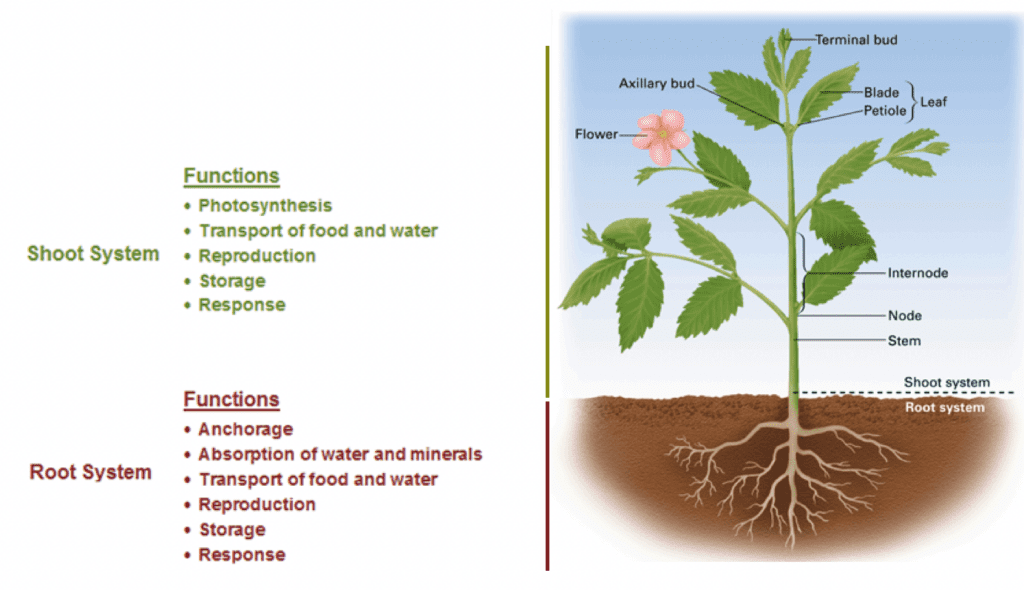
C- Tissu in flowering plants
When meristematic tissue divides, it produces new cells. Initially, these cells are specialised or undifferentiated. They then differentiate into three main categories of plant tissue: dermal, ground and vascular tissue. These tissues are continuous throughout the plant, but their exact structure and arrangement may vary.
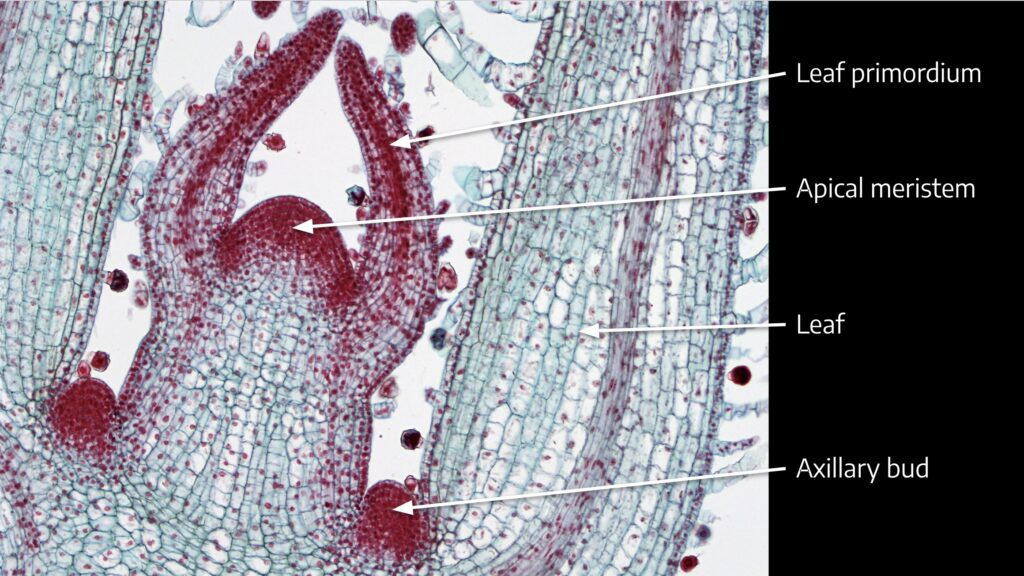
Dermal tissue forms the covering layer on a plant. In many respects it is similar to the skin of humans. It is normally called epidermis. Its main function is to protect the plant. Dermal tissue may have secondary functions, depending on its location.
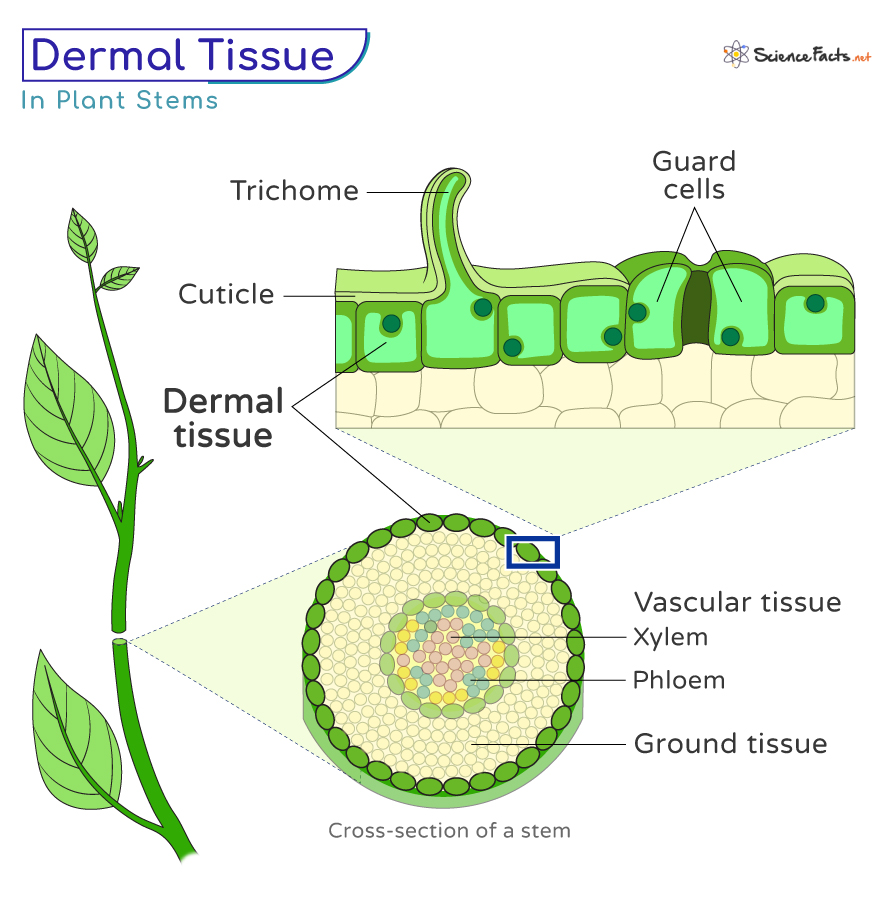
Ground tissue occupies the area between the dermal and vascular tissues in a plant. Ground tissue makes up most of the bulk of a young plant. It carries out a range of functions such as photosynthesis, storage of food and wastes, and it often gives strength and support to a plant.
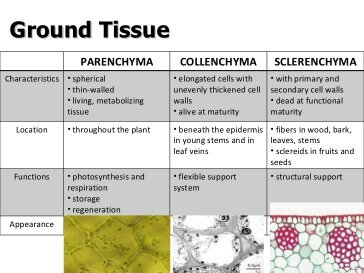
Vascular tissue consists of xylem and phloem. The main function of vascular tissue is to transport materials throughout the plant.
•Xylem is made up of two main types of cells: vessels (wide tubular structures efficient at transporting water) and tracheids (long, sloping or tapering cells whose insides are hollow. They overlap and allow water to pass).
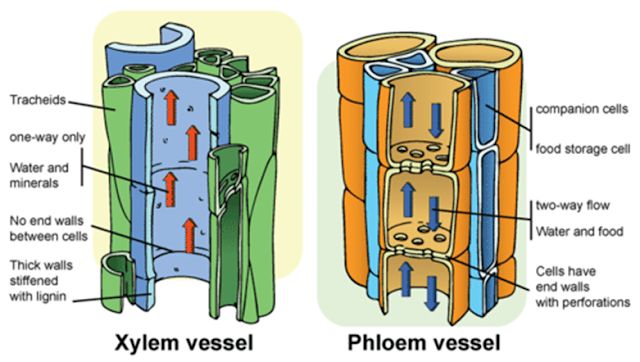
•Phloem is mainly composed of sieve tubes (long, tubular structures which allow the passage of materials from one element to another) and companion cells As companion cells are alive phloem is a living tissue.
Xylem transports water and minerai salts from the roots to the shoot.
Phloem transports energy and nutrients from the the shoot to the root.
Both bring mechanical support to the plant.
D- Classification of plants
There are two major categories of flowering plants : monocotyledonous plants (monocots) and dicotyledonous plants (dicots). The main differences between monocots and dicots are given on the following table.
| Monocots | Dicots |
| Seeds contain one cotyledon (which is a food store or seed leaf) | Seeds contain two cotyledons, or seed leaves |
| Mainly herbaceous (do not have woody parts) | Herbaceous or woody |
| Long narrow leaves Parallel veins in the leaf | Broadleaves |
| Vascular bundles are scattered at random in the stem | The veins form a branching network Vascular bundles form a ring in the stem |
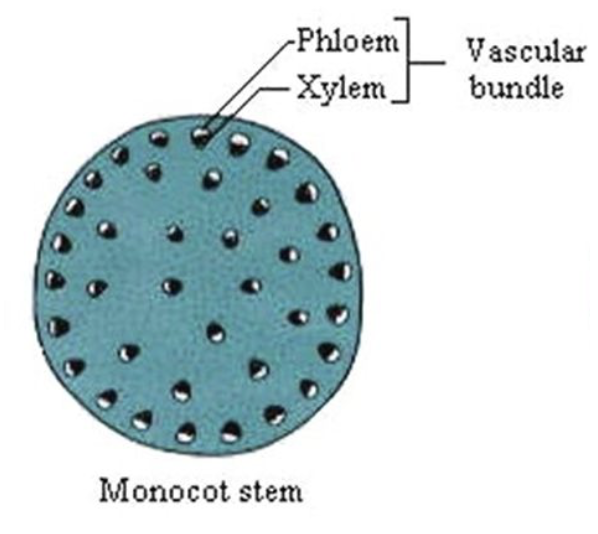 | 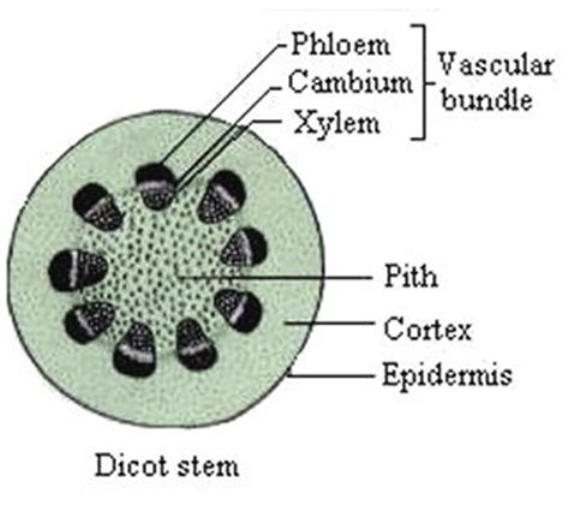 |
| The flowering parts are in groups (or multiples) of three | The flowering parts are in groups (or multiples) of four or five |
| Examples include daffodils, tulips, grasses and cereals | Examples include beans, peas, busy lizzies, oak, elm and ash |
Vocabulary:

